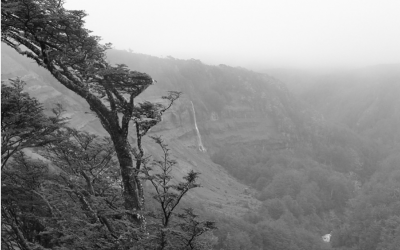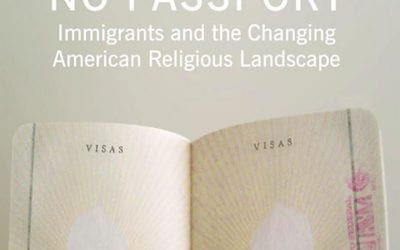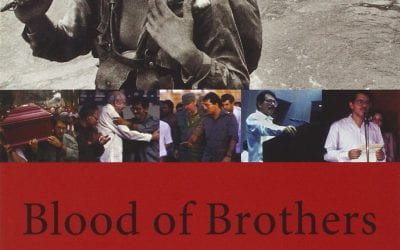The Seeds of Villa Victoria
A Tree Grows in Puerto Rico
When I arrived at the Harvard Graduate School of Education in 1981 to work on my doctorate, I got involved in Boston’s Villa Victoria out of family necessity. Even though I had been a community organizer in Puerto Rico, my main interest was in finding playmates for my three children—from three to eight years old at the time.
My children came away from the experience with lots of friends, but I received the seeds of a legacy that would influence my way of looking at community organization for the rest of my life. Now, as the director of the Puerto Rico Community Foundation, I find the Villa Victoria experience, which emphasizes empowerment through mutual housing concerns and other practical issues, shaped my way of working and thinking.
I was already familiar with the concept of “empowerment” when I arrived at Harvard where I’d been invited by Harvard anthropologist Robert Levine. I’d been a trainer for Episcopal Church projects and VISTA in Puerto Rico, going on for my Master’s in Anthropology at SUNY. I returned to teach anthropology at the University of Puerto Rico for a couple of years, but then went back to community organization.
At Harvard, with a wife and young family, I needed to work. I got a job at the Institute for Learnng and Teaching at UMass Boston. Assistant HUGSE Dean Estela Carrion, who lived in Dorchester, connected me with comunity leader Nelson Merced of the Hispanic Office of Planning and Evaluation (HOPE), which provided intellectual support to Villa Victoria.
Villa Victoria was in its most vibrant period. Jorge Hernández was the director of Inquilinos Boricuas en Acción (IBA); the housing project community was painting a colorful mural on its walls—a symbol of the hope and community participation. I got to see Villa Victoria almost every day because my youngest daughter attended the pre-school there.
At the time, Puerto Ricans were the largest Latino population in the Boston area with a strong presence in community development. Through Villa Victoria, I became familiar with the concept of affordable housing that involved the community to create its own space. As a community organizer, I was quite familiar with the rhetoric of “power” and “control,” but Villa Victoria employed these concepts in practical ways. I decided to write my qualifying paper for my doctorate on the concept of empowerment, focusing on its cultural aspect. I did the interviews for my paper in Villa Victoria; even more than a home away from home and the place where my little girl went to preschool, Villa Victoria was informing my intellectual quest across the river.
Three particular conditions of Puerto Rican migration made this type of cultural empowerment particularly important, and provided me with the seeds of what I would later implement on the Island. Puerto Rican migration is circular; because Puerto Ricans are U.S. citizens, it is easy to move back and forth, and the dream of return—held by most immigrant groups—is apt to become a reality, at least for a while. The architectural design of Villa Victoria—as if it were any barrio in Puerto Rico—brings the past in Puerto Rico to the present and also extends to the dream of the future. Villa Victoria is a cultural and psychological portrait of life in Puerto Rico.
In Villa Victoria, I also discovered another important aspect of being Puerto Rican. As a North American citizen, one has the right to legally reclaim a space. Unfortunately, undocumented immigrants—or to a certain extent, even legal immigrants from elsewhere—do not have that automatic right. Thus, Puerto Ricans in a sense are “entitled” to their empowerment, rather than being a whole bunch of people who are empowered by themselves. I learned that communities can develop their empowerment by controlling their physical space.
Back in Puerto Rico, I had learned the discourse of empowerment. One thing is to say that Puerto Rico needs more power, and another thing is to have a house. One thing is to have intellectual power and another thing is to have concrete assets—or assets in concrete. To have a house, a building, offices, a conference center—with a Puerto Rican organization that is truly representative—entails a level of empowerment that is much deeper than the psychological one.
I received my HUGSE doctorate in 1988 and returned to San Juan. I came back convinced that through community, we can improve our quality of life. I first worked as program director for the Puerto Rico Community Foundation; one of its programs was the federal “Community Housing Development Organization” (CHDO). I tried to recapture the experience of Villa Victoria by training community boards to develop housing. We paid attention to training about how to purchase land, how to have vision to develop a project, how to plan a project and other practical subjects.
When the Foundation got involved in 1994, there was only one CHDO, and even that one had not accomplished anything. Now, there are 34 CHDOs; 2,000 housing uuits have been constructed, representing 10% of all social housing in Puerto Rico. There are also special projects associated with these housing developments, working with street vendors, women and victims of violence.
Just between 1995 and 2002, community housing development organizations in Puerto Rico built ot rehabilitated 1, 647 housing units at a market value of $145,180,000. That is, grass-roots community-based housing generated value of more than $100 million in 24 communities in Puerto Rico. My Island faces special challenges in terms of housing. It is one of the most densely populations in the world. While the cost of an affordable housing unit, using 2002 figures, is $70,000, the mean family income in Puerto Rico is $10,000, with 59% of the Puerto Rican population on the Island below the U.S. poverty level.
Education is sub-stand too. So here at the Foundation, we’re also involved in another project that I consider to be inspired by my experience at Villa Victoria. We’re working with the education system to transform it from the grassroots, using commuity power to stimulate changes in schools. We want an international standard of education for Puerto Rico, and right now, it is not even on the par with U.S. standards. We want to change the focus from that of preventative programs with objectives like “No Child Left Behind” or the prevention of dropouts to that of an overhaul of the entire system. That can only come about with community involvement. This is a grassroots project that we are undertaking on a large scale.
Thus, the seeds of Villa Victoria have multiplied in Puerto Rico in two directions: housing and improvement of public education. I never imagined that the day I dropped off my daughter at the Boston preschool to find her playmates.
Spring 2008, Volume VII, Number 3
Nelson I. Colon, who received his doctorate from the Harvard Graduate School of Education, is President and CEO of the Puerto Rico Community Foundation.
Related Articles
Editor’s Letter: Puerto Rico
Long, long ago before I ever saw the skyscrapers of Caracas, long before I ever fished for cachama in Barinas with Pedro and Aída, long before I ever dreamed of ReVista, let alone an issue on Venezuela, I heard a song.
God Needs No Passport
For a practicing Buddhist, my first Mass attendance at St. Ambrose two years ago was a memorable event. I had spent the earlier part of the day visiting…
Blood of Brothers: Life and War in Nicaragua
Stephen Kinzer, New York Times Bureau Chief in Nicaragua for most of the war years, pauses in his compelling account of the war and its politics to explain the Socratic method needed to give…




